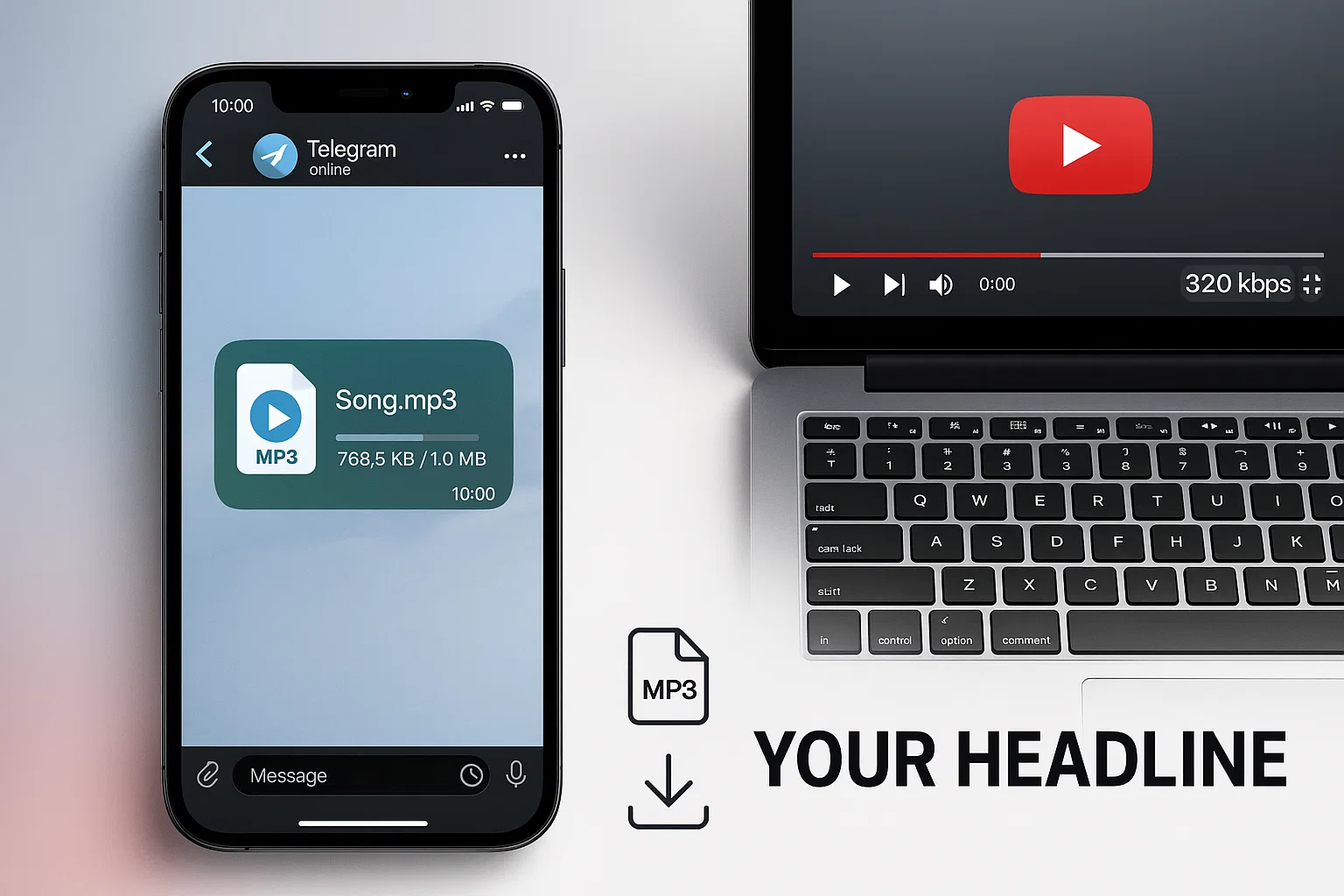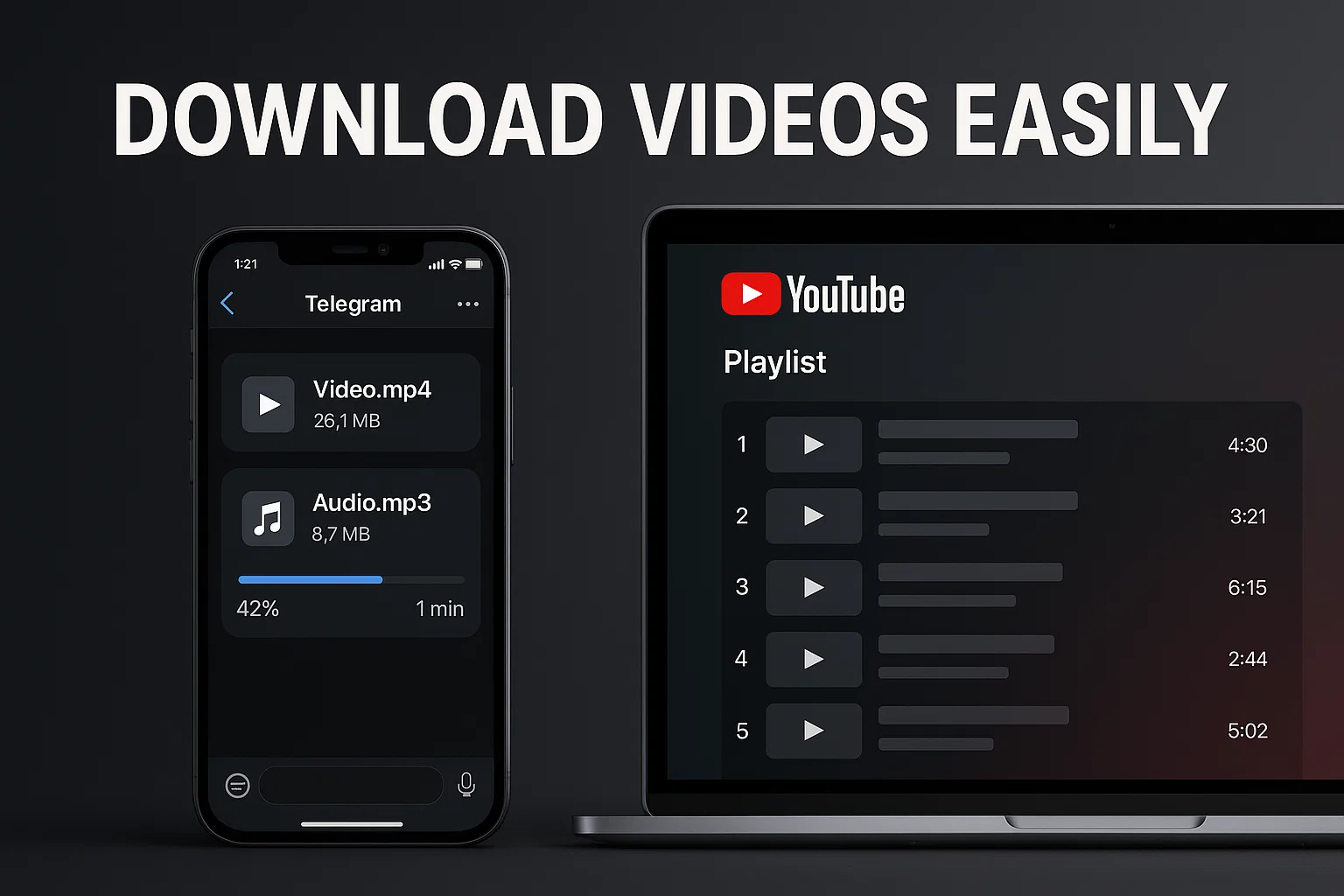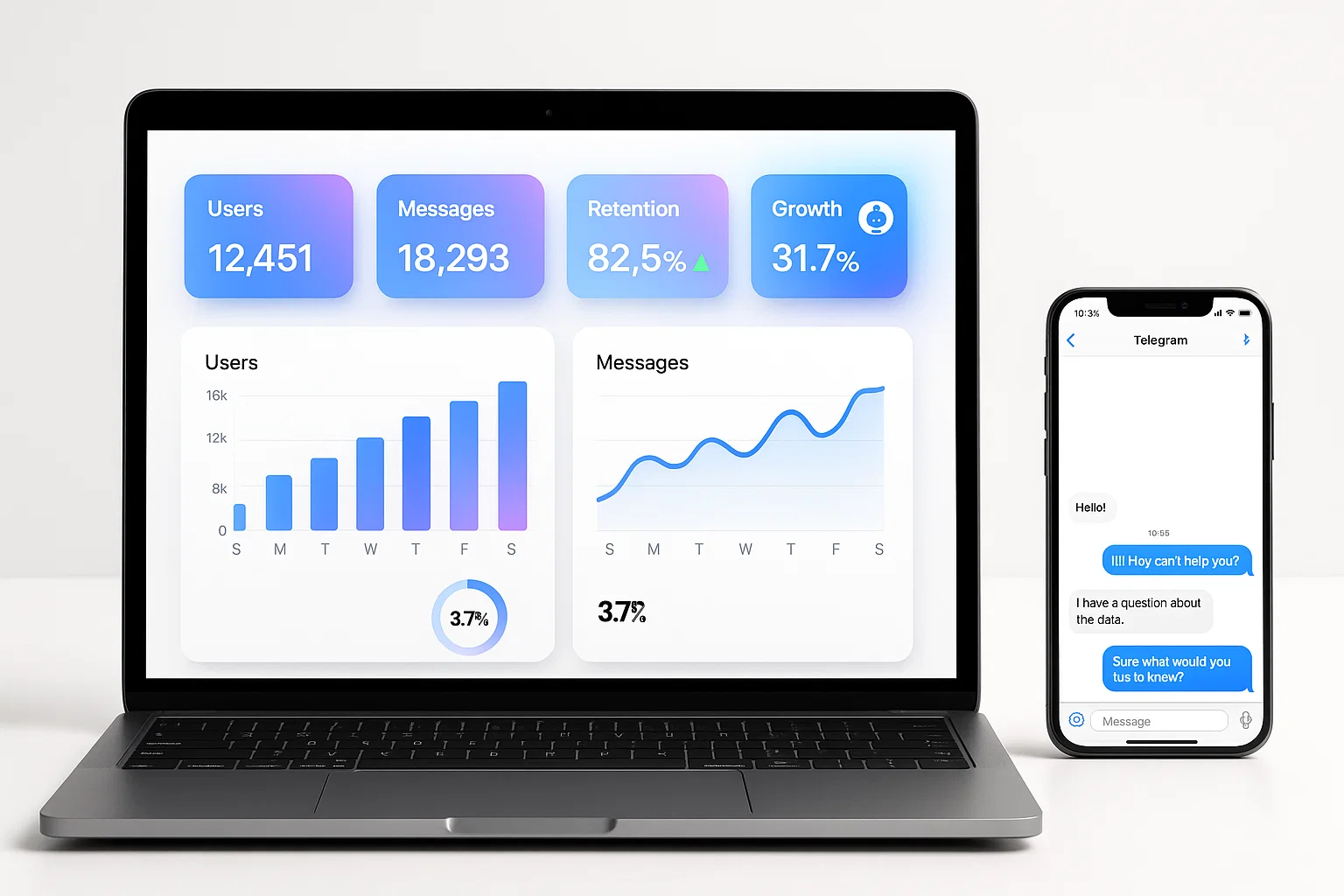Youtube to mp3 320kbps telegram bot converts YouTube videos into high-quality 320kbps MP3 files and sends them to Telegram automatically, so you can save, share, and listen offline with minimal setup, using yt-dlp, ffmpeg, and the Telegram Bot API.
Introduction
youtube to mp3 320kbps telegram bot is a practical, transactional tool for converting YouTube audio to high bitrate MP3 and delivering it straight to Telegram. This guide is meant to inform and help you build or use a reliable bot, walk through the architecture, give copy-paste code, and address legal and technical pitfalls. Early on I’ll mention core tools like yt-dlp and ffmpeg because they are central to stable, high-quality conversions. In my experience, combining a robust downloader with chunked uploads and a queue system makes the bot reliable for both small and large playlists.
This post is written for one reader, you, who wants a teammate-like walkthrough that gets you from idea to working bot without fluff.
What the bot is and why it matters
A youtube to mp3 320kbps telegram bot is an automation that accepts a YouTube link or query, downloads the audio at 320kbps, optionally tags and compresses it, and then uploads the MP3 to Telegram chats or channels.
Core concept
- User sends a YouTube URL or command to the bot.
- The bot fetches the best audio stream, uses ffmpeg to encode at 320kbps, then uploads the MP3 or posts a cloud link.
Why 320kbps matters
320kbpsMP3 is considered high quality for compressed audio, giving near-CD listening in a smaller file size than lossless formats. For music collectors, podcasters, and offline listeners, preserving quality is important.
Key components
- Downloader: yt-dlp or similar, to fetch best audio.
- Transcoder: ffmpeg, to ensure 320kbps encoding and consistent metadata.
- Bot framework: python-telegram-bot or node-telegram-bot-api, to accept commands and upload files.
- Storage: local disk or cloud (S3) to hold files before upload.
Good content and clear metadata help discovery and trust in tools and resources, focus on accurate descriptions and attribution. (Google)
Reliability, error handling, and user experience are top priorities when deploying automation tools. (Moz)
Key takeaway: a simple stack of yt-dlp, ffmpeg, and a Telegram bot API gives you a performant pipeline for 320kbps MP3 delivery.
How to build it, step-by-step
This section gives a reproducible path to a working bot, with numbered steps and copy-paste code.
- Get the basics
- Create a Telegram bot via BotFather, get your bot token.
- Prepare a server or inexpensive VPS with Python or Node, ffmpeg installed, and yt-dlp available.
- Install tools
- Install yt-dlp and ffmpeg, and your bot library of choice.
- Use environment variables for tokens to keep credentials safe.
- Implement the flow
- Accept a command like
/mp3 <YouTube URL>or/search <query>. - Download audio with yt-dlp, then transcode to 320kbps MP3 with ffmpeg.
- Upload the MP3 to Telegram or push to cloud and send the link.
- Add resilience
- Implement download queues, retry logic, and size checks.
- Clean up temporary files promptly.
Python example, ready to copy
# python
# Simple bot: download audio with yt-dlp, convert to 320kbps MP3, send to Telegram
import os
import subprocess
from telegram import Bot
from telegram.error import TelegramError
BOT_TOKEN = os.getenv("BOT_TOKEN")
CHAT_ID = os.getenv("TEST_CHAT_ID") # use chat id for testing
bot = Bot(BOT_TOKEN)
def download_and_convert(url, out_dir="tmp"):
os.makedirs(out_dir, exist_ok=True)
# Download best audio, save with safe name
out_template = os.path.join(out_dir, "%(title)s.%(ext)s")
subprocess.run(["yt-dlp", "-f", "bestaudio", "-o", out_template, url], check=True)
# Find downloaded file
files = [f for f in os.listdir(out_dir) if not f.startswith(".")]
src = os.path.join(out_dir, files[0])
dst = os.path.join(out_dir, "out_320.mp3")
# Convert to 320kbps MP3
subprocess.run(["ffmpeg", "-i", src, "-b:a", "320k", "-vn", dst], check=True)
return dst
def send_mp3(file_path):
try:
with open(file_path, "rb") as f:
bot.send_audio(CHAT_ID, f)
except TelegramError as e:
print("Telegram error", e)
# Usage, wrap in command handlers for production
# mp3 = download_and_convert("YOUTUBE_URL")
# send_mp3(mp3)
Explanation: This minimal script downloads best audio, converts to 320kbps, then sends as audio. Add try/except and remove temp files in real use.
Node.js example, copy-paste
// javascript
// Node: spawn yt-dlp, convert with ffmpeg, send via node-telegram-bot-api
const { spawnSync } = require('child_process');
const TelegramBot = require('node-telegram-bot-api');
const fs = require('fs');
const bot = new TelegramBot(process.env.BOT_TOKEN);
function downloadConvert(url, outDir = 'tmp') {
if (!fs.existsSync(outDir)) fs.mkdirSync(outDir);
// yt-dlp download
spawnSync('yt-dlp', ['-f', 'bestaudio', '-o', `${outDir}/%(title)s.%(ext)s`, url], { stdio: 'inherit' });
const files = fs.readdirSync(outDir).filter(f => !f.startsWith('.'));
const src = `${outDir}/${files[0]}`;
const dst = `${outDir}/out_320.mp3`;
// ffmpeg convert
spawnSync('ffmpeg', ['-i', src, '-b:a', '320k', '-vn', dst], { stdio: 'inherit' });
return dst;
}
async function send(filePath, chatId) {
await bot.sendAudio(chatId, filePath);
}
Explanation: The Node version demonstrates the same pipeline. For production, use async streams and error handling.
Best practices and recommended tools
Follow these to keep your bot stable and user friendly.
Best practices
- Use a download queue and concurrency limits.
- Tag MP3s with metadata using eyeD3 or ffmpeg.
- Respect file size and bot API upload constraints, fallback to cloud links.
- Log actions and surface clear errors to users.
Recommended tools and quick tips
- yt-dlp
- Pros: actively maintained, playlist support, format selection.
- Cons: command line, needs updates.
- Install tip:
pip install -U yt-dlpor download binary.
- ffmpeg
- Pros: universal transcoder, precise bitrate control.
- Cons: learning curve for advanced options.
- Install tip: use package manager or static builds, test with
ffmpeg -version.
- python-telegram-bot or node-telegram-bot-api
- Pros: well-documented, stable.
- Cons: handle file streaming carefully to avoid memory spikes.
- Install tip: use virtual env or npm, keep token in env var.
Key takeaways:
- Queue downloads to control load.
- Encode to 320kbps with ffmpeg for consistent quality.
- Use cloud storage for very large files.
Challenges, legal and ethical considerations, troubleshooting
This tech is powerful, but there are clear legal and ethical limits.
Legal and ethical checklist
- Obtain permission before downloading copyrighted music.
- Respect YouTube’s terms and takedown procedures.
- Publish transparent Terms of Service and privacy policies.
- Implement opt-in flows and rate limits to prevent abuse.
Troubleshooting quick wins
- If download fails, update yt-dlp and check network.
- If conversion errors occur, check ffmpeg logs and source codec.
- If Telegram rejects a file, check size limits and try
send_documentor cloud link.
Compliance checklist
- Permission for content, or only process user owned content.
- Clear retention policy for stored files.
- Secure tokens and audit logs.
- GDPR/CCPA style user data handling and opt-out options.
Compliance/disclaimer: This guide explains technical methods, it is not legal advice. For specific legal questions, consult a qualified professional.
Alternatives and fallback strategies
- Share cloud links instead of direct uploads to avoid size limits.
- Provide stream-only playback links, for users who cannot download.
- Build a paid tier for heavy usage with dedicated cloud storage.
Conclusion and CTA
A youtube to mp3 320kbps telegram bot gives you a repeatable, high-quality way to convert and share audio inside Telegram. Focus on a simple, reliable pipeline: yt-dlp for fetching, ffmpeg for 320kbps encoding, and a bot framework for delivery. Implement queues, proper metadata, and clear terms of use for safe operation.
Welcome to Alamcer, a tech-focused platform created to share practical knowledge, free resources, and bot templates. Our goal is to make technology simple, accessible, and useful for everyone. We provide free knowledge articles and guides, offer ready-to-use bot templates for automation and productivity, and deliver insights to help developers, freelancers, and businesses. For custom development services for bots and websites, reach out to Alamcer and we will help you build and deploy a production-ready solution.
FAQs
What is youtube to mp3 320kbps telegram bot?
A youtube to mp3 320kbps telegram bot is an automated tool that converts YouTube audio into 320kbps MP3 files and delivers them via Telegram, enabling quick downloads and sharing inside chats, channels, or groups.
How do I install the basic stack for this bot?
Install yt-dlp, ffmpeg, and your bot library (python-telegram-bot or node-telegram-bot-api). Store tokens in environment variables, and test with one or two sample links on a small server.
Is 320kbps MP3 noticeably better than 192kbps?
Yes for many listeners, 320kbps preserves more detail from the source. For casual listening, 192kbps may be acceptable, but 320kbps is preferred for music archiving.
Can this bot handle playlists and bulk downloads?
Yes, use yt-dlp playlist support and process items in batches with a queue to avoid rate limits and storage spikes.
How do I avoid hitting Telegram rate limits?
Limit concurrency, add backoff retries, and cache results. For heavy workloads, use multiple worker instances or a paid delivery system.
Are there privacy risks with uploading files to Telegram?
Yes, anyone with access to the chat can access files. Use private chats for personal archives and clearly state retention policies for any shared content.
How do I add metadata like artist and title to MP3?
Use ffmpeg or tools like eyeD3 to write ID3 tags after conversion, using metadata fetched by yt-dlp.
What happens if yt-dlp breaks?
yt-dlp is actively maintained, update it often. In the interim, fallback to cloud links or pause new requests while you troubleshoot.
Can I run this on a low-cost VPS?
For light use, yes. For many users or large playlists, prefer cloud VMs with larger disk and bandwidth, or use cloud storage to avoid local disk limits.
How do I comply with copyright and ToS?
Only process content you own or have permission to download. Provide clear Terms of Service, a privacy policy, and consult legal counsel for complex situations.


![Build Powerful Telegram Bot Mini Apps Today [Step-by-Step Guide]](https://alamcer.com/storage/posts/KLgMvRWahMBVj67hugOmZ6HpYbJCg7xJJ8gpGj3N.webp)
